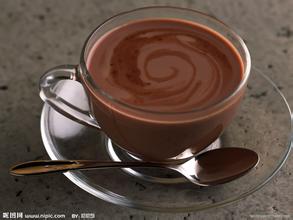Introduction to the Flavor of High-quality Coffee beans in the Coffee Variety producing area of Tianji Manor in Nicaragua
Nicaragua coffee has a wide range of flavor attributes. Some coffees have a high body, like Mexican coffee, while others have a bright acidity, like African coffee. Nicaragua coffee plant used coffee varieties are mostly traditional iron pica, there are also a few bourbon and cadura varieties planted.
Overall, Nicaragua coffee is characterized by peace but without losing flavor. Full city and Viennese are both good choices when roasting Nicaragua coffee. A medium depth roast gives Nicaragua coffee a mellow bitterness and an excellent balance.
Nicaragua La Esperanza
Country of manufacture: Nicaragua
Grade: SHG
Planting area: Sinotega
Label: La Esperanza
Treatment method: wet treatment and raw sun
Appearance: 0d/300gr, 17-18SCR
Breed: Cadura
Note: The dry aroma is rich in chocolate flavor, accompanied by hazelnut and cocoa aromas. The moist aroma also has chocolate flavours with orange peel aromas. Bright lemon fruit acids and a long cocoa finish are wonderful at the city+ roast.
Dry aroma (1-5): 3.8
Wet aroma (1-5): 3.8
Acidity (brightness)(1-10): 8.9
Taste (layering)(1-10): 8.8
Taste (body)(1-5): 3.4
Aftertaste (Residue)(1-10): 8.9
Balance (1-5): 2
Base Points (50):50
Total score (max. 100):89.6
Intensity/Main Attributes: Medium intensity/definite chocolate flavours with citrus and spice embellishments
Recommended baking level: full city
Contrast: Very refined, clear, clear Nicaragua coffee

Important Notice :
前街咖啡 FrontStreet Coffee has moved to new addredd:
FrontStreet Coffee Address: 315,Donghua East Road,GuangZhou
Tel:020 38364473
- Prev

Caramel Sweet Coffee Variety in Nicaraguan Heavenly Manor Coffee Variety introduction to Fine Coffee beans
Columbus arrived here in 1502 and reached the east coast of Nicaragua. In 1522, Spanish colonists began to conquer the region. The cities of Granada and Leon were founded in 1524. From then on, Nicaragua became a Spanish colony and came under the jurisdiction of the Governor's Office of Guatemala. The city of Leon developed into a political and cultural center; Granada became a commercial and agricultural center. In the later period of colonial rule
- Next

Introduction to the Flavor description of Fine Coffee beans in the Coffee Variety producing area of Fire Phoenix Manor in Costa Rica
Coffee was introduced into Costa Rica from Cuba in 1729. Today, its coffee industry is one of the well-organized industries in the world, with a yield of 1700 kg per hectare. Costa Rica has only 3.5 million people but 400m coffee trees, and coffee exports account for 25 per cent of the country's total exports. The volcanic soil of Costa Rica is very fertile and well drained, especially in the central part.
Related
- Does Rose Summer choose Blue, Green or Red? Detailed explanation of Rose Summer Coffee plots and Classification in Panamanian Jade Manor
- What is the difference between the origin, producing area, processing plant, cooperative and manor of coffee beans?
- How fine does the espresso powder fit? how to grind the espresso?
- Sca coffee roasting degree color card coffee roasting degree 8 roasting color values what do you mean?
- The practice of lattes: how to make lattes at home
- Introduction to Indonesian Fine Coffee beans-- Java Coffee producing area of Indonesian Arabica Coffee
- How much will the flavor of light and medium roasted rose summer be expressed? What baking level is rose summer suitable for?
- Introduction to the characteristics of washing, sun-drying or wet-planing coffee commonly used in Mantenin, Indonesia
- Price characteristics of Arabica Coffee Bean Starbucks introduction to Manning Coffee Bean Taste producing area Variety Manor
- What is the authentic Yega flavor? What are the flavor characteristics of the really excellent Yejasuffi coffee beans?

